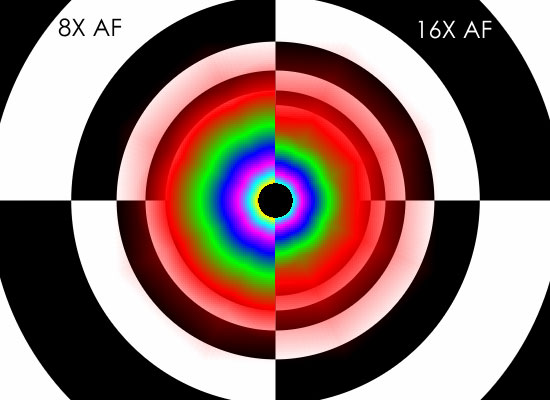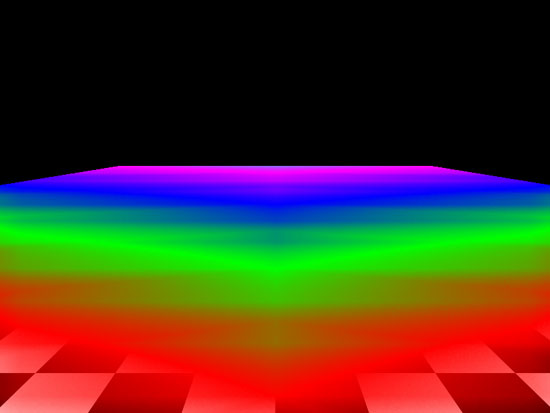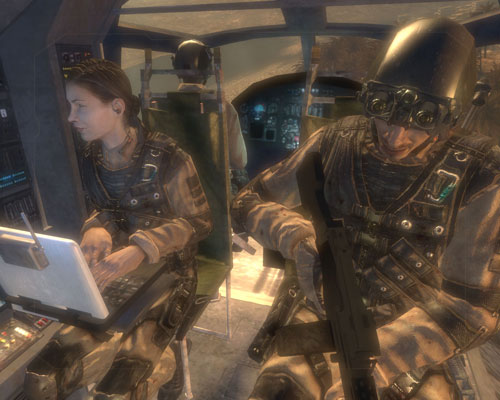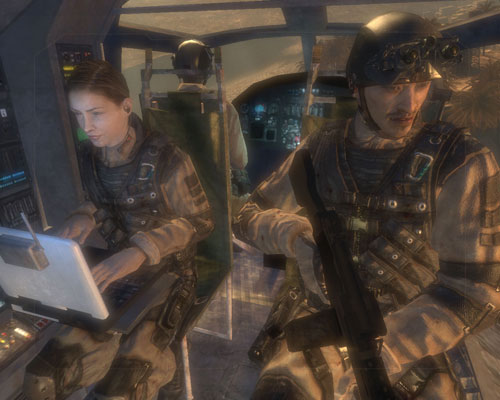ATI Radeon HD 2900 XT: Calling a Spade a Spade
by Derek Wilson on May 14, 2007 12:04 PM EST- Posted in
- GPUs
General Image Quality
Beyond antialiasing, there are quite a number of factors that go into making real-time 3D look good. Real-time graphics are an optimization problem, and the balance between performance and quality is very important. There is no single "right" way to do graphics, and AMD and NVIDIA must listen carefully to developers and consumers to deliver what they believe is the sweet spot between doing things fast and doing things accurately.
NVIDIA currently offers much more customizable image quality. Users are able to turn on and off different optimizations as they see fit. AMD really only offers a couple specific settings that affect image quality, while most of their optimizations are handled on a per game basis by the ominous feature known as Catalyst A.I. The options we have are disabled, standard and advanced. This doesn't really tell us what is going on behind the scenes, but we leave this setting on standard for all of our tests, as this is the default setting and most users will leave it alone.
Aside from optimizations, texture filtering plays a large role in image quality when high levels of filtering are called for. It's trivial to point sample or bilinear filter, and no one skimps on these duties, but when we get to trilinear and anisotropic filtering the number of texture samples we need and the number of calculations we must perform per pixel go up very quickly. In order to mitigate the cost of these operations, both AMD and NVIDIA attempt to apply high levels of filtering where they are needed and not-so-high levels of filtering where it won't matter that much. Of course there is much debate over where to draw the lines here, and NVIDIA and AMD both choose different paths.
To investigate texture filtering quality, we have employed the trusty D3D AF-Tester. This long-lived application enables us to look at one texture with different colored mipmap levels to see how hardware handles filtering them under different settings. Thankfully, we don't have to talk about angle dependent anisotropic filtering (which is actually a contradiction in terms anyway). AMD and NVIDIA both finally do good quality anisotropic filtering that results in higher resolutions textures being used more of the time where possible. Take a look at these images to see how the different hardware stacks up.

NVIDIA G80 Tunnel 8x/16x AF
G80
R5xx
R6xx
It still looks like NVIDIA is doing slightly more angle independence filtering. In practice, it will be very difficult to tell the difference between an image rendered on AMD hardware and one rendered on NVIDIA hardware. We can also see that AMD has slightly tweaked their AF technique to eliminate some of the odd transitions we noticed on R5xx hardware. This comes through a little better if we look at a flat plane:

AMD R600 Plane 8x AF
R5xx
R6xx
We did happen to notice at least one image quality issue not related to texture filtering on AMD hardware. The problem turns up in Rainbow Six: Vegas in the form of very bad banding where we should see HDR lighting. We didn't notice this problem on G80, as we can see from our comparison.
  |
| Click to enlarge |
We also noticed a small issue with Oblivion at one point where the oblivion gate shader would bleed through other objects, but this was not reproducible and we couldn't get a screenshot of it. This means it could be a game related issue rather than a hardware or driver problem. We'll keep our eyes peeled.
Overall IQ of the current DX10 hardware available is quite good, but we will continue to dig further into the matter to make sure that everything stays that way. We're also waiting for DX10 games before we can determine if there are other differences, but hopefully that won't be the case as DX10 has a single set of requirements.










86 Comments
View All Comments
yyrkoon - Tuesday, May 15, 2007 - link
See, the problem here is: guys like you are so bent on saving that little bit of money, by buying a lesser brand name, that you do not even take the time to research your hardware. USe newegg , and read the user reviews, and if that is not enough for you, go to the countless other resources all over the internet.yyrkoon - Tuesday, May 15, 2007 - link
Blame the crappy OEM you bought the card from, not nVIdia. Get an EVGA card, and embrace a completely different aspect on video card life.MSI may make some decent motherboards, but their other components have serious issues.
LoneWolf15 - Thursday, May 17, 2007 - link
Um, since 95% of nvidia-GPU cards on the market are the reference design, I'd say your argument here is shaky at best. EVGA and MSI both use the reference design, and it's even possible that cards with the same GPU came off the same production line at the same plant.DerekWilson - Thursday, May 17, 2007 - link
it is true that the majority of parts are based on reference designs, but that doesn't mean they all come from the same place. I'm sure some of them do, but to say that all of these guys just buy completed boards and put their name on them all the time is selling them a little short.at the same time, the whole argument of which manufacturer builds the better board on a board component level isn't something we can really answer.
what we would suggest is that its better to buy from OEMs who have good customer service and long extensive warranties. this way, even if things do go wrong, there is some recourse for customers who get bad boards or have bad experiences with drivers and software.
cmdrdredd - Monday, May 14, 2007 - link
you're wrong. 99% of people buying these high end cards are gaming. Those gamers demand and deserve the best possible performance. If a card that uses MORE power and costs MORE (x2900xt vs 8800gts) and performs generally the same or slower what is the point? Fact is...ATI's high end is in fact slower than mid range offerings from Nvidia and consumes alot more power. Regardless of what you think, people are buying these based on performance benchmarks in 99% of all cases.AnnonymousCoward - Tuesday, May 15, 2007 - link
No, you're wrong. Did you overlook the emphasis he put on "NOT ALWAYS"?You said 99% use for gaming--so there's 1%. Out of the gamers, many really want LCD scaling to work, so that games aren't stretched horribly on widescreen monitors. Some gamers would also like TVout to work.
So he was right: faster is NOT ALWAYS better.
erwos - Monday, May 14, 2007 - link
It'd be nice to get the scoop on the video decode acceleration present on these boards, and how it stocks up to the (excellent) PureVideo HD found in the 8600 series.imaheadcase - Tuesday, May 15, 2007 - link
I agree! They need to do a whole article on video acceleration on a range of cards and show the pluses and cons of each card in respective areas. A lot of people like myself like to watch videos and game on cards, but like the option open to use the advanced video features.Turnip - Monday, May 14, 2007 - link
"We certainly hope we won't see a repeat of the R600 launch when Barcelona and Agena take on Core 2 Duo/Quad in a few months...."Why, that's exactly what I had been thinking :)
Phew! I made it through the whole thing though, I even read all of those awfully big words and everything! :)
Thanks guys, another top review :)
Kougar - Monday, May 14, 2007 - link
First, great article! I will be going back to reread the very indepth analysis of the hardware and features, something that keeps me a avid Anandtech reader. :)Since it was mentioned that overclocking will be included in a future article, I would like to suggest that if possible watercooling be factored into it. So far one review site has already done a watercooled test with a low-end watercooling setup, and without mods acheived 930MHz on the Core, which indirectly means 930MHz shaders if I understand the hardware.
I'm sure I am not the only reader extremely interested to see if all R600 needs is a ~900-950MHz overclock to offer some solid GTX level performance... or if it would even help at all. Again thanks for the consideration, and the great article! Now off to find some Folding@Home numbers...